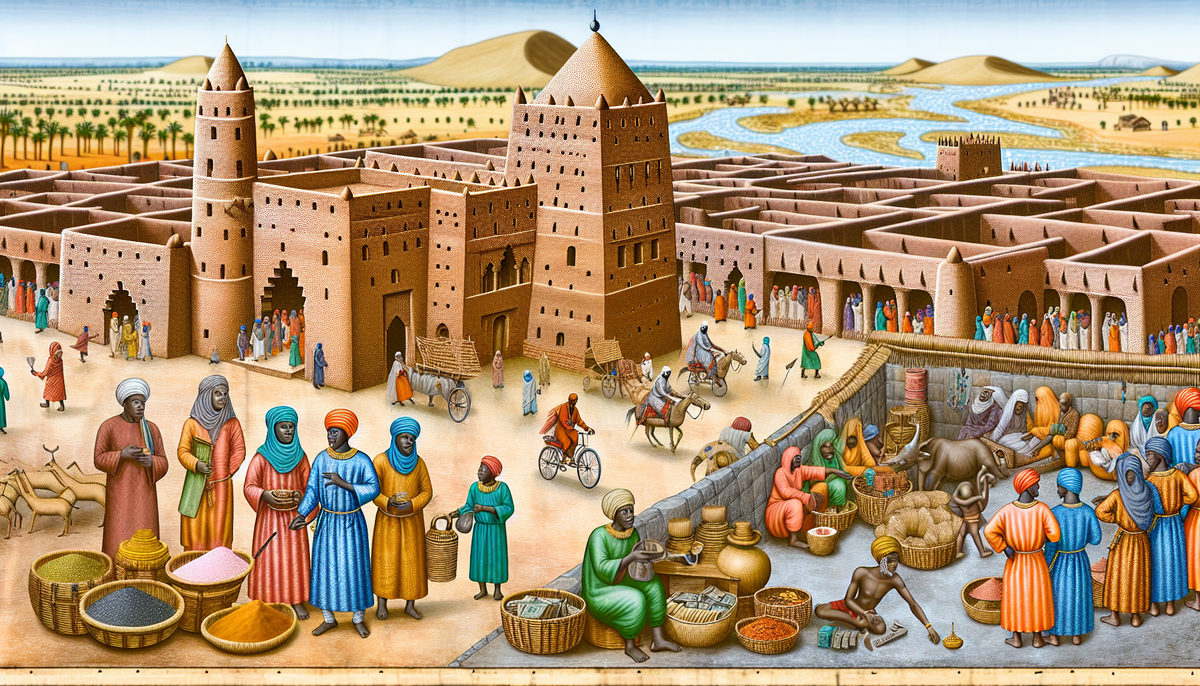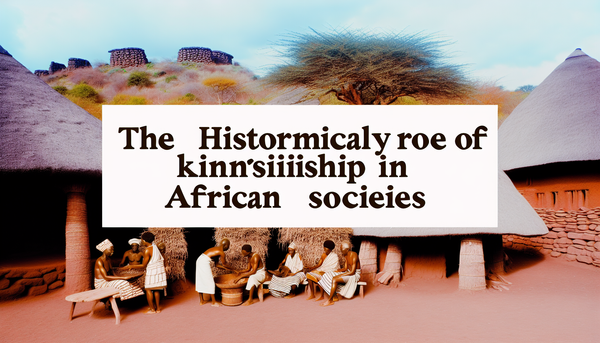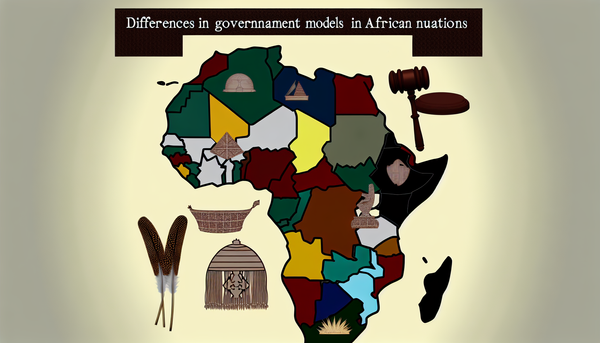The Ancient Kingdom of Mali and Its Influence on Trade

History and Origins of the Mali Kingdom
The Mali Kingdom emerged in the 13th century, becoming one of the most significant empires in West Africa during its peak. It was founded by the legendary figure Sundiata Keita, who united various tribes and established a centralized government around 1235. This unification laid the groundwork for one of the largest empires in African history.
Mali's rise to power was facilitated by its rich natural resources, particularly gold and salt, which were highly sought after in trans-Saharan trade. These commodities attracted traders, scholars, and artisans, thus fostering economic growth and cultural exchange. The kingdom's strategic location along key trade routes connected North Africa to sub-Saharan regions, further enhancing its influence and wealth.
During the reign of Mansa Musa (1312–1337), the empire reached its zenith. Musa is famed not only for his immense wealth but also for his pilgrimage to Mecca, which showcased Mali’s prosperity and put it on the global map. His efforts to promote education, particularly in Timbuktu, transformed the city into a center of learning and culture, attracting scholars from various regions.
The legacy of the Mali Kingdom remains significant, as its contributions to trade, culture, and governance shaped the course of West African history.
Economic Impact of Gold and Salt Trade
The economic foundation of the Mali Kingdom was profoundly shaped by the lucrative trade in gold and salt, two commodities that were essential to the medieval economy of West Africa and beyond. Gold, extracted primarily from the Bambuk and Baye regions, positioned Mali as one of the richest empires of its time. The kingdom's vast gold reserves not only enriched its rulers but also attracted traders and merchants from diverse regions, facilitating robust commercial networks.
Salt, often considered as valuable as gold, was mined from the Saharan salt flats, particularly in places like Taghaza. It served as a vital preservative for food and was crucial for maintaining health, making it indispensable for communities throughout the region. The trade routes established for transporting these resources enabled the exchange of not just goods but also ideas and cultures.
Mali's control over these trade routes allowed it to impose taxes on traders, generating substantial revenue that supported further expansion and development. This wealth funded public works, military endeavors, and the establishment of educational institutions. The economic success from the gold and salt trade ultimately solidified Mali's status as a dominant force in West Africa, influencing trade dynamics for centuries to come.
Cultural Contributions and Legacy
The Mali Kingdom's cultural contributions left an indelible mark on the history of West Africa and beyond. One of its most significant legacies was the flourishing of art, literature, and architecture. The city of Timbuktu emerged as a cultural hub during the empire's height, renowned for its vibrant scholarly community and impressive architectural feats. The Djinguereber Mosque and the Sankore University, built during this period, became symbols of Islamic learning and attracted scholars from across the Muslim world.
Additionally, the Empire fostered a rich oral tradition. Griots, the traditional storytellers and historians, played a vital role in preserving the history and culture of the Mali people through songs and stories passed down generations. This oral tradition helped to solidify community identities and ensured the continuity of ancestral narratives.
Furthermore, the empire's embrace of Islam deepened cultural connections with North Africa and the Middle East, facilitating the exchange of ideas, religious practices, and artistic expressions. The blend of indigenous beliefs with Islamic teachings led to a unique cultural synthesis that still resonates in modern West African societies.
The Mali Kingdom's cultural heritage, characterized by its artistic expressions, scholarly pursuits, and community values, continues to influence contemporary African identity and plays a crucial role in the global narrative of human civilization.
Geopolitical Influence in West Africa
The Mali Kingdom's geopolitical influence in West Africa during its peak was profound and far-reaching, shaping the region's dynamics for centuries. At the height of its power, Mali controlled a vast territory that encompassed significant trade routes connecting North Africa with sub-Saharan regions. This strategic positioning allowed the empire to serve as a central hub for commerce, facilitating not only the exchange of goods but also cultural and political interactions among different ethnic groups.
Mali's ability to regulate trade routes made it a formidable player in regional politics. By imposing taxes on caravans and enforcing trade regulations, the empire amassed considerable wealth, which it leveraged to maintain military strength and secure its borders. The military prowess of Mali allowed it to expand its territory, incorporating neighboring states and solidifying its dominance in the region.
Additionally, the empire's diplomatic engagements with other kingdoms, such as Songhai and Ghana, paved the way for alliances and conflicts that further shaped West African geopolitics. The legacy of Mali’s governance and trade practices influenced subsequent empires and established foundations for future political structures in the region. Even after its decline, the geopolitical significance of Mali echoed in the historical narratives of West Africa, highlighting its foundational role in shaping the continent's history.
Major Trade Routes and Commerce Achievements
The Mali Kingdom flourished due to its strategic control over key trade routes that facilitated commerce across West Africa and beyond. These routes, primarily established for the transportation of gold and salt, interconnected various regions, enabling the exchange of a diverse array of goods, including ivory, textiles, and agricultural products. The most prominent route connected the southern goldfields of Bambuk and Bure to the trans-Saharan trade networks, where caravans would traverse harsh deserts to reach bustling marketplaces in cities like Timbuktu and Gao.
Mali's achievements in commerce were underpinned by its robust taxation system and the establishment of trade fairs that attracted merchants from as far as Europe and the Middle East. These interactions not only enriched the kingdom economically but also facilitated cultural exchanges, bringing new ideas, technologies, and artistic influences to the region.
The empire's notable wealth and commercial success were exemplified during the reign of Mansa Musa, whose famous pilgrimage to Mecca showcased Mali's opulence. Aside from enhancing trade ties, Musa's endeavors to build mosques and educational institutions symbolized the kingdom's commitment to fostering economic development and cultural growth. Ultimately, the Mali Kingdom's trade routes and commercial achievements significantly influenced the economic landscape of West Africa, leaving a lasting legacy.
Prominent Figures and Leadership
The Mali Kingdom was shaped by several prominent figures whose leadership and vision significantly influenced its development. The most renowned among these was Sundiata Keita, the empire's founder and visionary leader, who emerged in the early 13th century. Sundiata unified various tribes and established a strong central government, laying the groundwork for Mali's future prosperity. His legendary journey from exile to monarchy is celebrated in the Epic of Sundiata, an oral tradition that underscores his role as a symbol of resilience and national identity.
Another pivotal figure was Mansa Musa, who ruled from 1312 to 1337. Mansa Musa is often regarded as one of the wealthiest individuals in history. His pilgrimage to Mecca in 1324 not only showcased the empire's immense wealth but also strengthened Mali's international relations and cultural ties. His patronage of education and the arts led to the establishment of Timbuktu as a prominent center of learning and culture, attracting scholars from across the Islamic world.
Additionally, leaders such as Mansa Magha, Musa’s successor, and other respected military generals and administrators played vital roles in maintaining the empire’s strength and stability. Collectively, these figures exemplify the dynamic leadership that fostered the Mali Kingdom's growth and left a lasting legacy on the region's history.
Comparative Analysis with Contemporary Empires
The Mali Kingdom, at its zenith during the 13th to 15th centuries, presents intriguing parallels and contrasts with contemporary empires such as the Ottoman and Ming Dynasties. Like Mali, the Ottoman Empire thrived on strategic trade routes, controlling the crossroads between Europe, Asia, and Africa. Both empires utilized their geographic advantages to dominate commerce, though the Ottomans ultimately engaged in more extensive naval expansion, while Mali concentrated on trans-Saharan trade.
In terms of cultural influence, the Ming Dynasty, with its emphasis on arts and exploration, similarly enriched China through advancements in governance, science, and culture. While Mali's cultural contributions centered around oral traditions and Islamic scholarship, the Ming period is noted for its technological innovations and maritime expeditions.
Economically, each empire leveraged its wealth for military and public projects. Mansa Musa’s pilgrimage exemplified Mali’s wealth and its commitment to education and architecture, much like the Ottomans, who constructed grand mosques and educational institutions.
However, Mali was more decentralized compared to the centralized governance of the Ming and Ottoman empires, which had well-defined bureaucratic structures. This comparative analysis highlights both the similarities in trade and cultural diffusion across empires and the unique organizational dynamics that defined each empire’s strengths and challenges.



